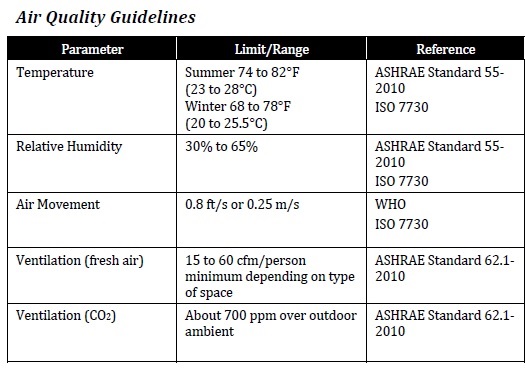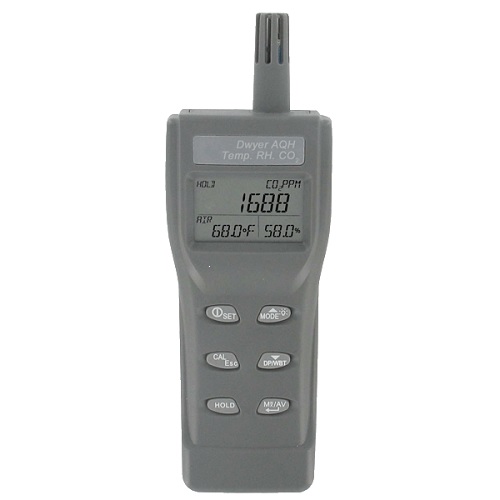Indoor Air Quality
Every day we consume 1kg of food and 2 ltrs of water, but we inhale approximately 20000 litres of air. Since we spend around 90% of our time indoors, the quality of that air must be monitored and conditioned for our comfort, productivity and even our health.
The focus on energy conservation has meant buildings are now being more tightly constructed, placing more emphasis on ventilation and Indoor Air Quality (IAQ). Improving and maintaining Indoor Air Quality not only increases productivity, but can also improve the overall performance and efficiency of HVAC systems.
Well maintained Indoor Air Quality is crucial to avoid what is known as Sick Building Syndrome (SBS). SBS is often caused by poor ventilation and the subsequent air quality. This can cause symptoms in occupants such as dry, itchy eyes and throats. Headaches, lethargy and poor concentration are also common symptoms.
Measuring the IAQ is a vital part of maintaining the ventilation system of a building to prevent SBS and ensure the comfort and health of its occupants. Below are just some of the industry standards acceptable comfort levels for Indoor Air Quality.
ASHRAE and WHO Indoor Air Quality Guidelines…

The main parameters measured for IAQ are Temperature, Humidity, CO2 levels and ventilation/drafts. ASHRAE (American Society of Heating, Refrigeration and Air-Conditioning Engineers) and WHO (World Health Organisation) are just two of the governing bodies which help regulate Indoor Air Quality.
Testing of Indoor Air Quality should be routinely carried out to a schedule (generally every 12 months) to comply with regulations, but periodic checks can be carried out in occupied areas using portable equipment. One example of a suitable instrument would be the Dwyer AQH-20 multi-parameter Air Quality meter. Measuring CO2 levels, ambient temperature and relative humidity, the Dwyer AQH-20 is a useful instrument for monitoring IAQ.
The very low velocities to be considered when measuring air movement can be difficult to detect. Fluidic Ltd are the UK distributor for Schmidt Technology. Schmidt offer a full range of flow instrumentation, with some of their sensors capable of measuring directional air flow as low as 0.05m/s. Positioned correctly, Schmidt’s range of instruments, with either switching or transmitter outputs, can help control ventilation to maintain optimum fresh-air flow.
Fluidic Ltd represent a number of manufacturers and our experienced engineers are able to offer advice and support on a wide range of suitable products for indoor air quality monitoring.

